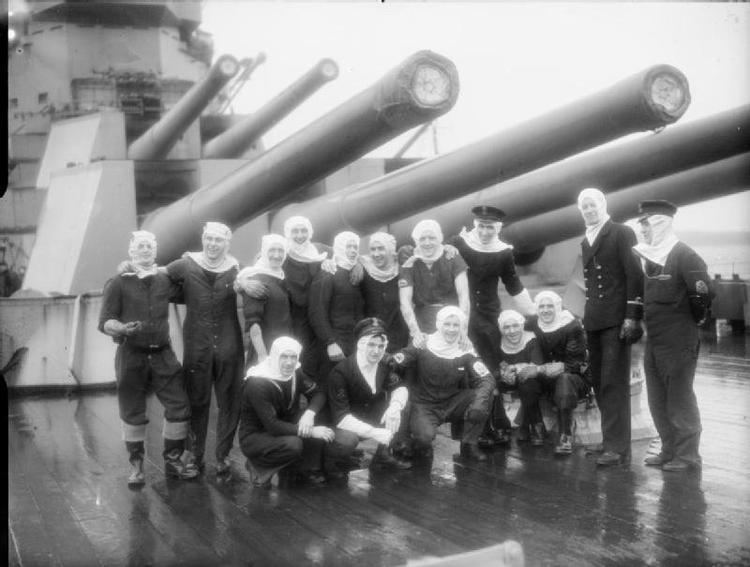Type Naval gun In service 1940-1945 Designed 1937 | Place of origin UK Used by UK Number built 78 | |
 | ||
The BL 14 inch Mk VII naval gun was a breech loading (BL) gun designed for the battleships of the Royal Navy in the late 1930s. This gun armed the King George V-class battleships during the Second World War.
Contents
Background
The choice of calibre was limited by the Second London Naval Treaty, an extension of the Washington Naval Treaty which set limits on the size armament and number of battleships constructed by the major powers. After disappointing experiences with the combination of high velocity but relatively light shell in the BL 16 inch /45 naval gun of the Nelson-class battleships, the British reverted to the combination of lower velocities and (relatively) heavier shells in this weapon.
Design
The built-up gun was of an all-steel construction, using a radial expansion design; this was an advance on earlier British heavy guns, which employed a wire-wound technology. The resulting gun was lighter, less prone to droop, more accurate and had a significantly longer barrel life. The estimated barrel life was 340 effective full charges. The new 14-inch Armour Piercing (AP) 1,590-pound shell had, relative to its size, superior ballistic performance and armour-penetration compared to previous British shells, due to improvements in design and material which had taken place since World War I. The shell also carried a very large bursting charge of 48.5 lb (22.0 kg)
The choice of mounting was a mechanically complex, quadruple turret (each battleship had 2 quadruple turrets (Mark III) and one twin turret (Mark II)). The turret and ammunition-handling facilities incorporated many anti-flash measures and interlocks, improving safety but adding to complexity.
Performance
On entering operational service the turrets gained an initial reputation for unreliability, with individual guns and entire turrets jamming in action. However, it has been argued that these jams were typically caused by errors in drill, either due to lack of gun crew training, as was the case when the newly commissioned HMS Prince of Wales engaged the Bismarck in the Battle of the Denmark Strait (1941), or due to crew fatigue resulting from the prolonged nature of the engagement, as was the case when HMS King George V engaged Bismarck in 1941 and HMS Duke of York engaged Scharnhorst in the Battle of North Cape (1943). In the latter battle Duke of York fired 52 broadsides, of these 31 straddled the target and a further 16 fell within 200 yards - an excellent performance, even when radar-control is taken into account.
By being instrumental in the destruction of two modern enemy battleships, the 14-inch Mark VII gun was, arguably, the most successful battleship main armament of World War II.
Coastal guns
Two guns, nicknamed Winnie and Pooh, were also mounted in World War II as coastal artillery near Dover to engage German batteries across the Channel in occupied France.
